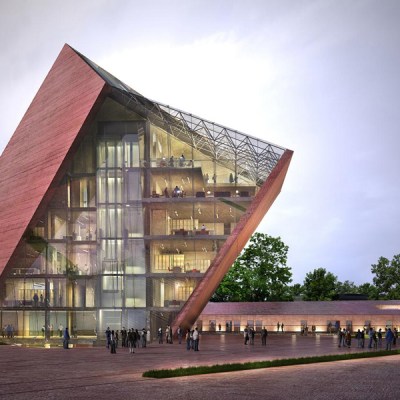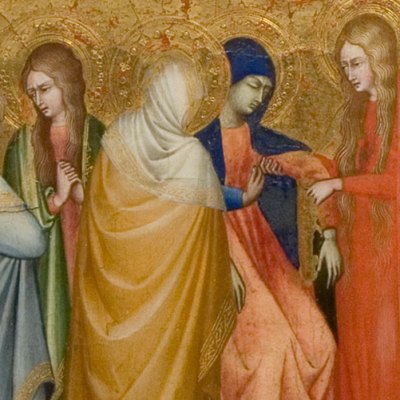In November 2016 the curators at the Holburne Museum in Bath announced they had found a forgotten Brueghel painting hidden in the museum’s vaults. The news echoed the plot of Michael Frayn’s comic novel Headlong, which revolves around the discovery of a long-lost masterpiece by Pieter Bruegel the Elder (c. 1525–69; he dropped the ‘h’ from his signature, but his descendants reinstated it in theirs, which explains the variant spelling of the name). But the Holburne’s discovery was not as serendipitous as it initially sounds: it was the result of a year of careful conservation and research into Wedding Dance in the Open Air (1607–14), which concluded in its reattribution from ‘follower of Bruegel’ to Pieter Brueghel the Younger (1564/5–1638/9), the son and imitator of the great master.
The reattribution is nevertheless an important discovery for the museum, bringing its total number of paintings by Pieter Brueghel the Younger to three; it now has the largest collection by this artist in the UK. The Holburne has taken this opportunity to organise an exhibition around the three works, the first of its kind in the UK devoted to the art of the Bruegel dynasty. It is an ambitious undertaking, featuring 35 works drawn from 15 different public institutions across the country, and it is testimony to the negotiating skills of the curators that they have persuaded so many lenders to part with these precious and fragile paintings. The exhibition opens with Bruegel’s The Adoration of the Kings (1564) from the National Gallery in London – the first time this work has been loaned in over 100 years.
With paintings such as this and his more famous scenes of peasant life, Bruegel achieved celebrity within his own time. His works were highly sought after and those that remained on the market following his death in 1569 were rapidly bought up by wealthy collectors. To meet the continued demand for imagery in the Bruegel manner, other artists soon began to produce copies, imitations, and pastiches of his work, so that by the early decades of the 17th century Antwerp was in the grip of ‘Bruegel-mania’. The practice of copying or imitating another’s work did not carry negative connotations at the time, but was regarded as a legitimate way of paying tribute to a great artist and of replicating popular paintings.
It was in this milieu that Pieter Bruegel the Elder’s two sons, Pieter Brueghel the Younger and Jan Brueghel the Elder (1568–1625), began their careers. Only small children at the time of their father’s death, they had no opportunity to learn directly from him. It is doubtful how much first-hand knowledge they had of his paintings: most by now were in the private collections of cardinals and princes. But the evidence suggests that the Brueghel sons had access to many of their father’s drawings and detailed preparatory studies; it was by exploiting this legacy and the family name that they established their own artistic careers.
Two Peasants Binding Faggots (c. 1620–50), Pieter Brueghel the Younger. Barber Institute of Fine Arts, University of Birmingham

Of the two brothers, Pieter the Younger adhered most closely to the Bruegel brand. The exhibition largely focuses on his work, and aims to reinstate him as an artist in his own right, rather than being a mere copyist. In this respect it largely succeeds, revealing his individual talents, though it is clear his paintings never attained the same enigmatic subtlety of his father’s. Comparing the seven paintings by him in the exhibition reveals his distinctive painterly touches, as well as the ways he adapted his approach to suit a variety of subjects and formats.
With layers of discoloured varnish removed, Wedding Dance in the Open Air has regained much of its clarity and brightness, revealing Pieter Brueghel the Younger’s deft brushwork and fine detailing. In contrast to his father’s more sympathetic portrayals of country folk, Pieter the Younger plays the scene for comic effect, exaggerating the dancers’ features and physical awkwardness. The Barber Institute’s Two Peasants Binding Faggots (c. 1620–50) is a particularly fine example of Brueghel the Younger’s painting, and not based on any known prototype. It is a strong composition, in which two contrasting figures, one fat and one thin, pull in opposing directions and yet are united in a common purpose.
Jan Brueghel the Elder was a significantly more innovative and more successful artist than his brother, and less bound to his father’s legacy. His sons, Jan Brueghel the Younger (1601–78) and Ambrosius Brueghel (1617–75), both became successful painters, the former fathering a large family which included five sons who continued in the family trade. The Bruegel clan also expanded through marriage: one of Jan the Elder’s daughters, Paschasia, married the painter Hieronymus van Kessel (1578–c. 1636) and another, Anna, married David Teniers the Younger (1610–90). Each of these two unions produced its own dynasty of painters. Teniers is represented in the exhibition with another recently reattributed work from the Holburne’s collection, Boy Blowing Bubbles (c. 1640).
In contrast to the attention paid to Pieter Brueghel the Younger, the exhibition deals with Jan Brueghel the Elder and his descendants in more summary terms. Jan the Elder is a complex and influential artist whose diverse output embraced numerous different genres. To do him full justice would require a much more comprehensive exhibition. But the few paintings of his shown here are of high quality: A Stoneware Vase of Flowers (c. 1607–08) demonstrates his innovations in the genre of flower painting, and A Flemish Fair (1600) shows how he could combine the Bruegel subject of a peasant festival with an exquisitely rendered mountainous landscape.
The circular layout of the exhibition concludes where it began, with Pieter Bruegel the Elder’s Adoration of the Kings. Some might say he is the only Brueg(h)el worthy of attention. But this impressive show begs to differ, exploring the ways in which inheritance and innovation shaped artistic careers across a number of generations of this influential family of painters.
‘Bruegel: Defining a Dynasty’ is at the Holburne Museum, Bath, from 11 February–4 June.
From the April 2017 issue of Apollo. Preview and subscribe here.




